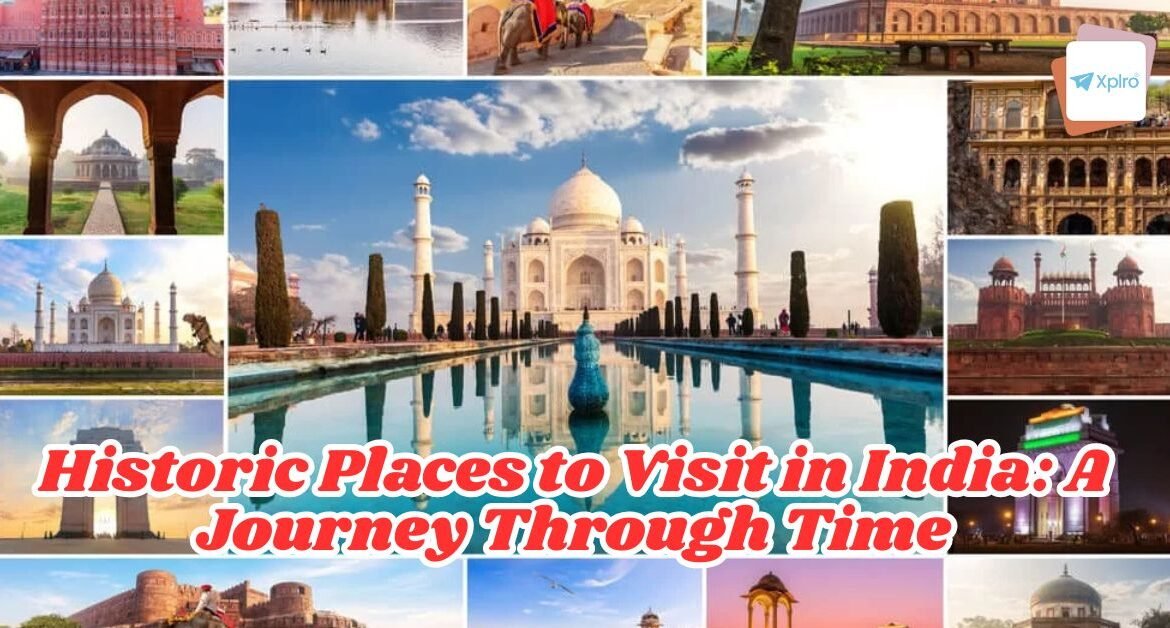India is a land where history breathes through every monument, fort, and temple. From the grandeur of the Taj Mahal in Agra to the mighty Red Fort of Delhi and the spiritual aura of Hampi’s ruins, each site tells a tale of empires, art, and culture. Exploring historic places in India isn’t just about sightseeing—it’s about stepping into centuries of legacy, architecture, and royal brilliance.
Whether you’re a history buff, a photographer, or a curious traveler, these heritage destinations offer unforgettable experiences. In this blog, we’ll guide you through the most famous historic places to visit in India, featuring UNESCO World Heritage Sites, ancient palaces, and timeless temples that showcase India’s glorious past. Get ready to plan your next heritage trip with travel tips, must-visit highlights, and the stories behind India’s iconic landmarks.
- 1. Taj Mahal, Agra – The Eternal Symbol of Love
- 2. Red Fort, Delhi – The Heart of Mughal Power
- 3. Hampi, Karnataka – The Ruins of a Glorious Empire
- 4. Khajuraho, Madhya Pradesh – Temples of Art and Eroticism
- 5. Fatehpur Sikri, Uttar Pradesh – The Ghost City of Akbar
- 6. Konark Sun Temple, Odisha – A Chariot of the Sun God
- 7. Mysore Palace, Karnataka – Royal Grandeur in the South
- 8. Sanchi Stupa, Madhya Pradesh – The Buddhist Legacy
- 9. Chittorgarh Fort, Rajasthan – Tales of Valor and Sacrifice
- 10. Mahabalipuram, Tamil Nadu – Sculpted by the Sea
- Comparison Table: Top 10 Historic Places in India
- Conclusion
- FAQs
1. Taj Mahal, Agra – The Eternal Symbol of Love
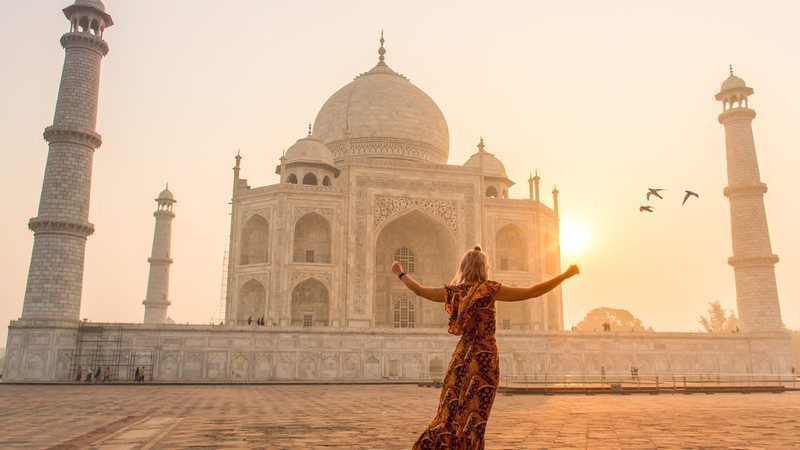
The Taj Mahal, a UNESCO World Heritage Site, is India’s most iconic monument. Built by Emperor Shah Jahan in memory of his wife Mumtaz Mahal, this white marble mausoleum is a masterpiece of Mughal architecture.
Highlights:
- Built in 1632, completed in 1648
- Intricate inlay work with semi-precious stones
- Best visited at sunrise or full moon nights
Travel Tip:
Avoid weekends for a more peaceful experience. Combine with Agra Fort and Fatehpur Sikri for a full Mughal trail.
2. Red Fort, Delhi – The Heart of Mughal Power
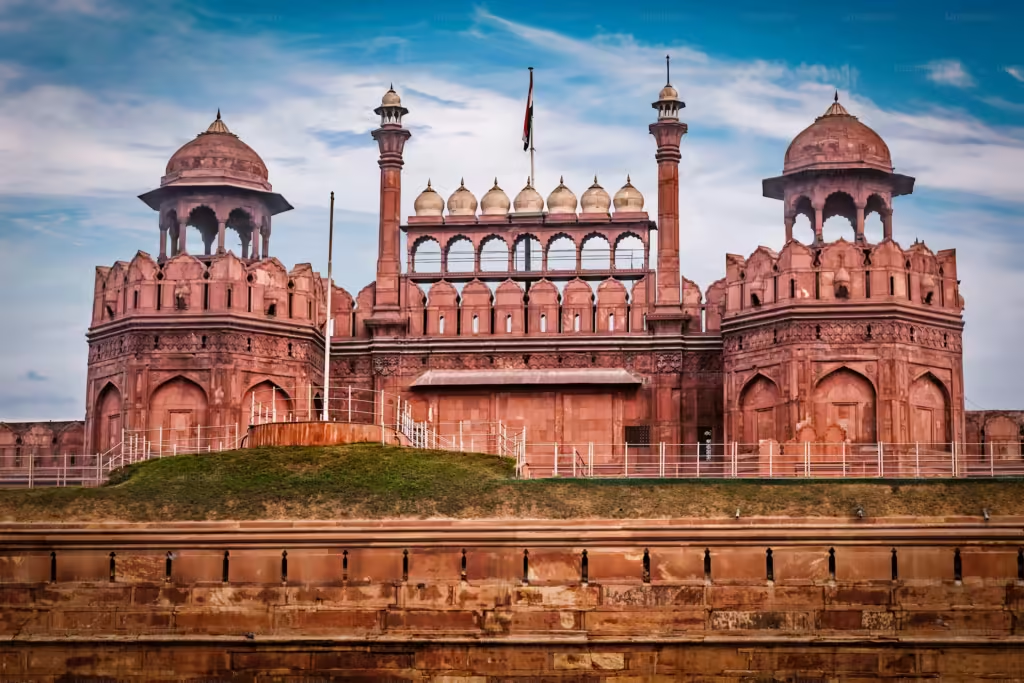
Commissioned by Shah Jahan in 1638, the Red Fort served as the main residence of Mughal emperors for over 200 years. Its red sandstone walls and ornate interiors reflect the zenith of Mughal artistry.
Highlights:
- Site of India’s Independence Day speech
- Diwan-i-Aam and Diwan-i-Khas halls
- Light and sound show in the evening
3. Hampi, Karnataka – The Ruins of a Glorious Empire
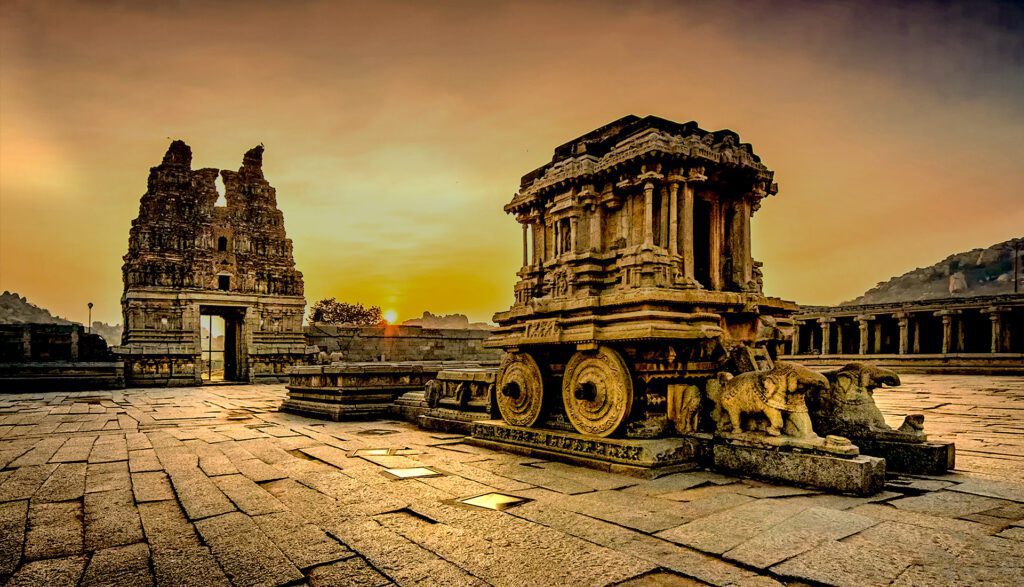
Hampi, once the capital of the Vijayanagara Empire, is a sprawling complex of temples, palaces, and market streets. Its surreal landscape of boulders and ruins makes it a photographer’s paradise.
Highlights:
- Virupaksha Temple and Vittala Temple
- Stone chariot and musical pillars
- UNESCO World Heritage Site
Best Time to Visit:
October to February for pleasant weather and cultural festivals.
4. Khajuraho, Madhya Pradesh – Temples of Art and Eroticism
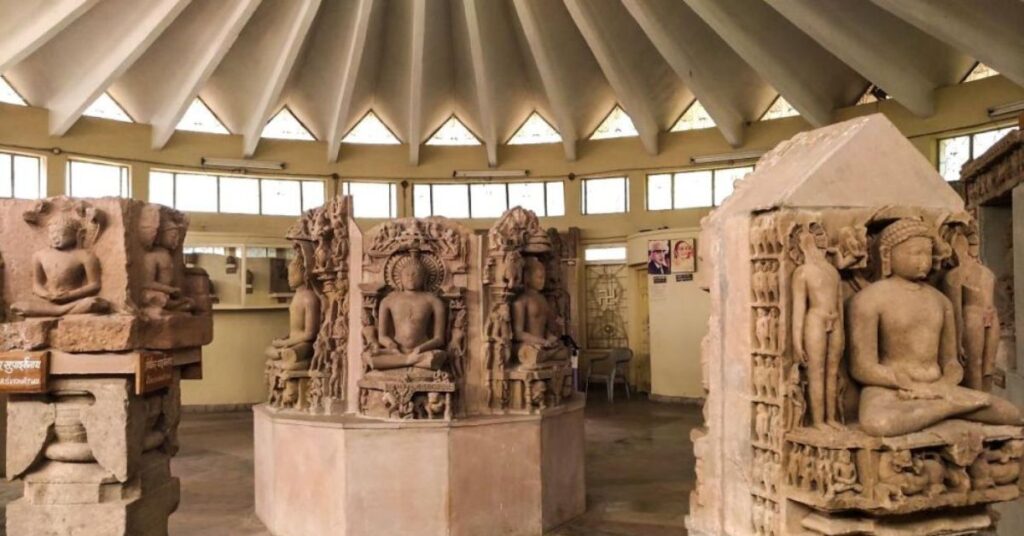
Khajuraho’s temples are renowned for their intricate carvings that celebrate life, spirituality, and sensuality. Built between 950 and 1050 AD by the Chandela dynasty, these temples are a testament to India’s artistic legacy.
Highlights:
- Western Group of Temples (UNESCO listed)
- Sculptures depicting daily life and mythology
- Light and sound show
Travel Tip:
Hire a guide to understand the symbolism behind the carvings.
5. Fatehpur Sikri, Uttar Pradesh – The Ghost City of Akbar
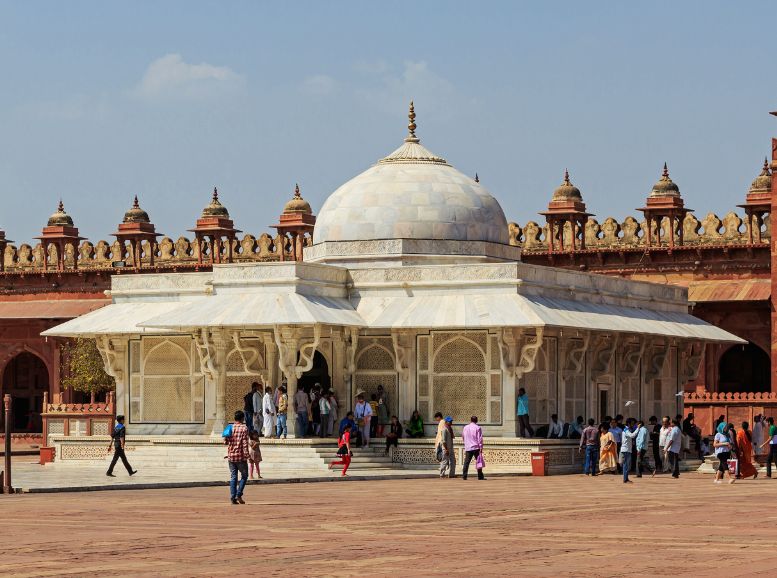
Built by Emperor Akbar in the 16th century, Fatehpur Sikri was the short-lived capital of the Mughal Empire. Its red sandstone buildings blend Islamic and Hindu architectural styles.
Highlights:
- Buland Darwaza – the tallest gateway in the world
- Jama Masjid and Panch Mahal
- Tomb of Salim Chishti
Why It’s Unique:
Despite its grandeur, the city was abandoned due to water scarcity.
6. Konark Sun Temple, Odisha – A Chariot of the Sun God

The Konark Sun Temple, shaped like a colossal chariot, is dedicated to Surya, the Sun God. Built in the 13th century, it showcases the zenith of Kalinga architecture.
Highlights:
- 24 intricately carved wheels
- Erotic sculptures similar to Khajuraho
- UNESCO World Heritage Site
Best Time to Visit:
During the Konark Dance Festival in December.
7. Mysore Palace, Karnataka – Royal Grandeur in the South
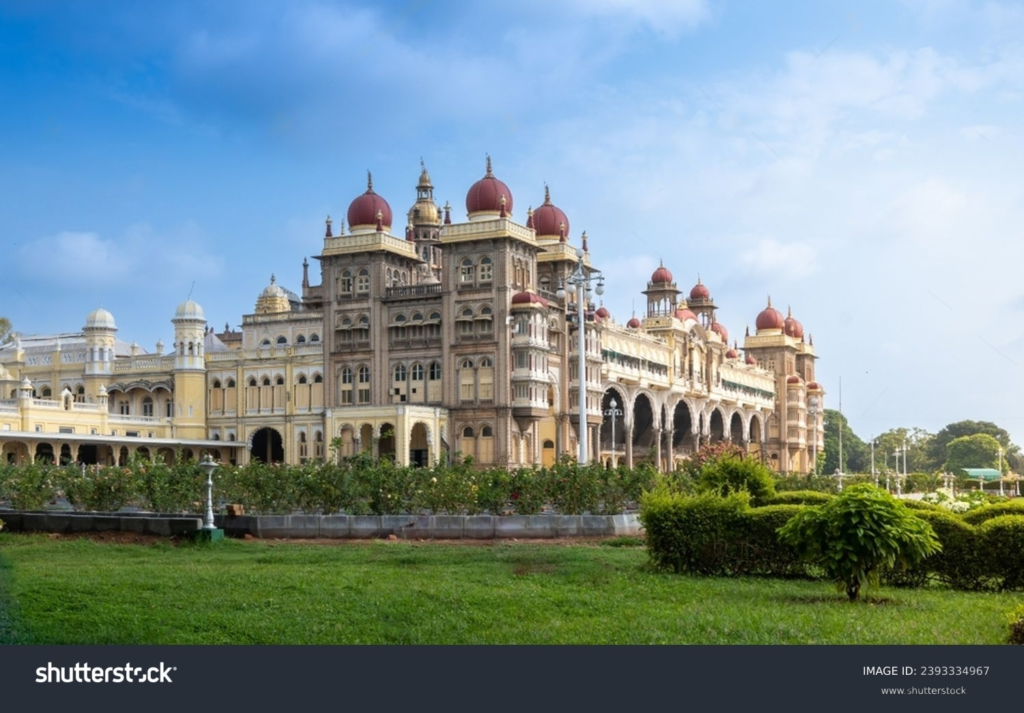
The Mysore Palace is a stunning example of Indo-Saracenic architecture. Home to the Wodeyar dynasty, it’s a blend of Hindu, Muslim, Rajput, and Gothic styles.
Highlights:
- Illuminated palace during Dussehra
- Golden throne and durbar hall
- Guided tours available
8. Sanchi Stupa, Madhya Pradesh – The Buddhist Legacy
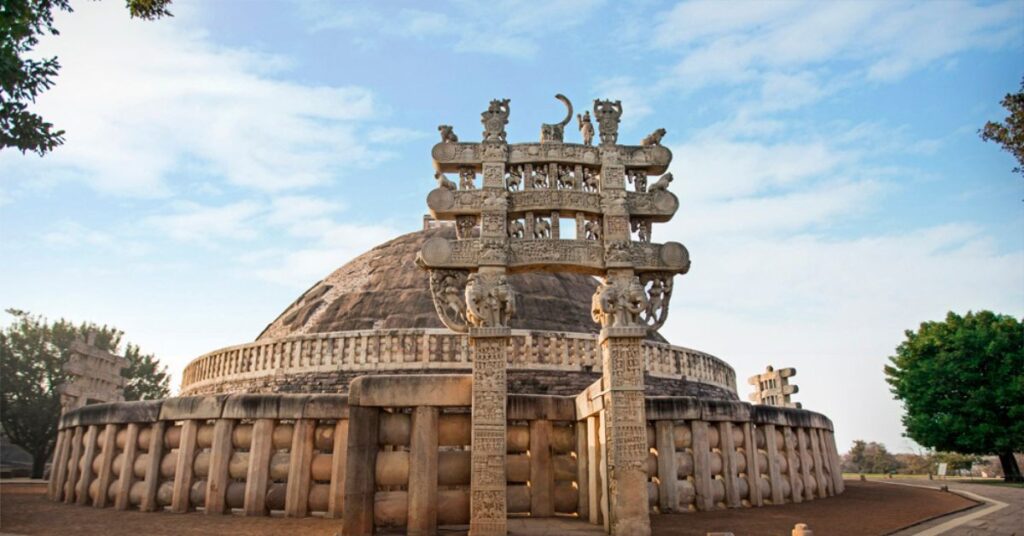
Commissioned by Emperor Ashoka in the 3rd century BCE, the Sanchi Stupa is one of the oldest stone structures in India. It marks the spread of Buddhism and features exquisite carvings.
Highlights:
- Great Stupa and four gateways
- Ashokan pillar and inscriptions
- UNESCO World Heritage Site
Travel Tip:
Visit the museum nearby for deeper insights into Buddhist art.
9. Chittorgarh Fort, Rajasthan – Tales of Valor and Sacrifice
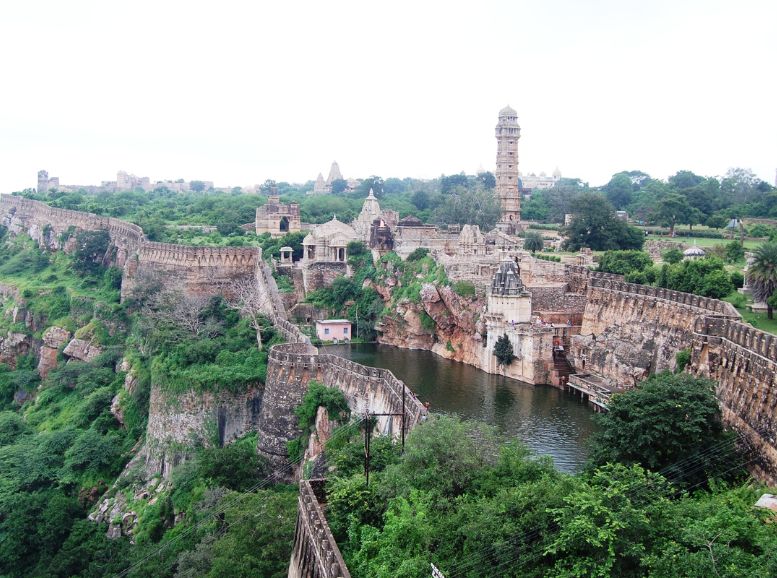
Chittorgarh Fort is the largest fort in India and a symbol of Rajput pride. It has witnessed legendary acts of valor, including the jauhar of Rani Padmini.
Highlights:
- Vijay Stambh and Kirti Stambh
- Rani Padmini’s Palace
- Light and sound show narrating Rajput history
Best Time to Visit:
October to March for cooler weather and cultural events.
10. Mahabalipuram, Tamil Nadu – Sculpted by the Sea
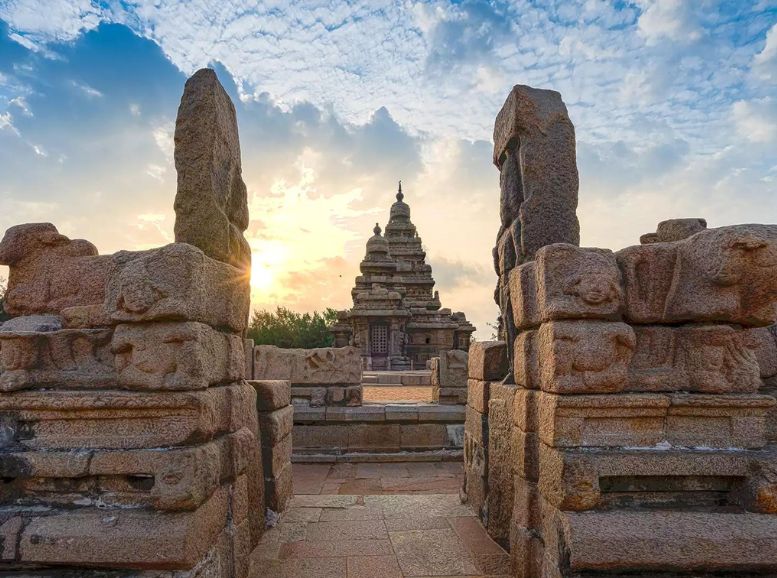
Mahabalipuram, also known as Mamallapuram, is famous for its rock-cut temples and shore monuments. Built by the Pallava kings in the 7th century, it’s a UNESCO World Heritage Site.
Highlights: Historic Places to Visit in India
- Shore Temple and Five Rathas
- Arjuna’s Penance – a giant open-air relief
- Annual dance festival in January
Travel Tip:
Stay overnight to enjoy sunrise views and beachside serenity.
Comparison Table: Top 10 Historic Places in India
| Place | State | Era/Period | UNESCO Status | Best Time to Visit |
|---|---|---|---|---|
| Taj Mahal | Uttar Pradesh | 17th Century | Yes | Oct–Mar |
| Red Fort | Delhi | 17th Century | Yes | Oct–Feb |
| Hampi | Karnataka | 14th–16th Century | Yes | Oct–Feb |
| Khajuraho | Madhya Pradesh | 10th Century | Yes | Oct–Mar |
| Fatehpur Sikri | Uttar Pradesh | 16th Century | Yes | Oct–Mar |
| Konark Sun Temple | Odisha | 13th Century | Yes | Nov–Feb |
| Mysore Palace | Karnataka | 20th Century | No | Sep–Mar |
| Sanchi Stupa | Madhya Pradesh | 3rd Century BCE | Yes | Oct–Feb |
| Chittorgarh Fort | Rajasthan | 7th Century | No | Oct–Mar |
| Mahabalipuram | Tamil Nadu | 7th Century | Yes | Nov–Feb |
Conclusion
India’s historic places are more than just tourist attractions — they are living chronicles of civilizations, conquests, and cultural evolution. From the ethereal beauty of the Taj Mahal to the spiritual serenity of Sanchi Stupa, each site offers a unique lens into India’s rich past and vibrant present.
Whether you’re planning a heritage tour, crafting a travel itinerary, or simply exploring the best historic places in India, this guide equips you with timeless destinations that blend storytelling, architecture, and legacy. These monuments and ruins aren’t just stones and structures — they are echoes of empires, whispers of wisdom, and symbols of resilience.
So pack your curiosity, charge your camera, and step into history. Let India’s ancient wonders inspire your modern journey.
FAQs
1. What are the top historic places to visit in India?
India’s top historic places include the Taj Mahal (Agra), Red Fort (Delhi), Hampi (Karnataka), Khajuraho Temples (Madhya Pradesh), and Konark Sun Temple (Odisha). These sites showcase India’s rich architectural and cultural legacy.
2. Which Indian monuments are UNESCO World Heritage Sites?
India has over 40 UNESCO World Heritage Sites. Key historic ones include Taj Mahal, Qutub Minar, Red Fort, Hampi, Mahabalipuram, Sanchi Stupa, and Rani ki Vav. These are globally recognized for their cultural significance.
3. What is the best time to visit historical sites in India?
The ideal time to visit historic places in India is between October and March. The weather is pleasant, making it easier to explore outdoor monuments and heritage sites.
4. How many historical places are there in India?
India has thousands of historical places, including forts, temples, palaces, and ruins. Over 3,600 monuments are protected by the Archaeological Survey of India (ASI), with many more under state and local care.
5. Which city in India has the most historical monuments?
Delhi is considered the city with the most historical monuments, including the Red Fort, Qutub Minar, Humayun’s Tomb, and Jama Masjid. It reflects centuries of Mughal, Sultanate, and colonial history.
6. Are there any offbeat historical destinations in India?
Yes, offbeat historic places include Orchha (Madhya Pradesh), Champaner-Pavagadh (Gujarat), Chittorgarh (Rajasthan), and Leh Palace (Ladakh). These sites offer unique stories and fewer crowds.
7. What are the oldest historical places in India?
Some of the oldest historic places in India include Varanasi (over 3,000 years old), Sanchi Stupa (3rd century BCE), and the ruins of Nalanda University (5th century CE). These sites date back to ancient civilizations.
8. Which historical places in India are best for photography?
The Taj Mahal, Hampi ruins, Jaipur’s forts, Mahabalipuram sculptures, and Fort Kochi are top picks for photography due to their stunning architecture and scenic backdrops.
9. What are the must-visit forts in India?
Must-visit forts include Mehrangarh Fort (Jodhpur), Amber Fort (Jaipur), Gwalior Fort (Madhya Pradesh), Chittorgarh Fort (Rajasthan), and Red Fort (Delhi). These forts reflect India’s royal and military history.
10. Which temples in India have historical significance?
Historically significant temples include Brihadeeswarar Temple (Thanjavur), Sun Temple (Konark), Kailasa Temple (Ellora), and Meenakshi Temple (Madurai). These temples are architectural marvels with centuries-old heritage.
11. How to plan a heritage tour across India?
To plan a heritage tour, choose regions like Rajasthan, Tamil Nadu, Uttar Pradesh, and Madhya Pradesh. Use travel apps, hire local guides, and book heritage hotels near historic sites for an immersive experience.
12. Are guided tours available for historic places in India?
Yes, guided tours are available at most major historic sites. You can book through government tourism portals, private operators, or on-site ticket counters. Guides enhance your understanding of the site’s history.
13. What should I pack for visiting historical sites in India?
Pack comfortable walking shoes, sun protection (hat, sunscreen), a water bottle, camera, and local currency. Carry ID and keep digital copies of tickets and bookings.
14. Are historic places in India accessible for senior citizens?
Many historic places offer ramps, wheelchairs, and assistance for senior citizens. However, some ancient sites may have uneven terrain. Check accessibility options before visiting.
15. Can I visit historical monuments in India with kids?
Yes, historic places in India are family-friendly. Sites like Red Fort, City Palace, and Hampi offer engaging experiences for children. Carry snacks, water, and keep kids supervised.
16. Are there entry fees for historic places in India?
Yes, most historic sites have entry fees. Indian citizens often pay lower rates than foreign tourists. Some sites offer free entry on national holidays or for students with valid ID.
17. Which historical places in India are open at night?
Some monuments like the Taj Mahal (on full moon nights), Qutub Minar (evening lighting), and certain forts offer night tours. Check official timings before planning your visit.
18. Are there heritage hotels near historic sites in India?
Yes, India has many heritage hotels near historic places. Examples include Neemrana Fort Palace (near Delhi), Samode Palace (Jaipur), and Taj Falaknuma Palace (Hyderabad). These offer royal experiences.
19. What are the safety tips for visiting ancient monuments in India?
Stay hydrated, wear comfortable clothing, avoid climbing restricted areas, and follow local guidelines. Respect cultural norms and avoid littering or damaging heritage structures.
20. How can I book tickets for historic places online in India?
You can book tickets through the ASI’s official website (asi.payumoney.com), state tourism portals, or travel platforms like MakeMyTrip and TripAdvisor. Online booking helps avoid queues and secure entry slots.


